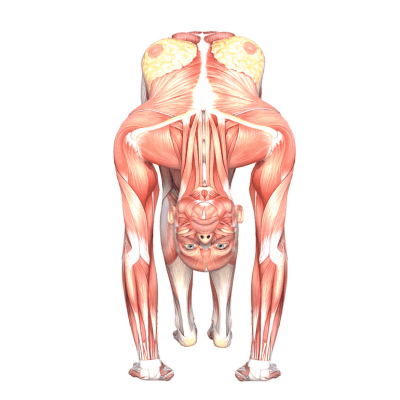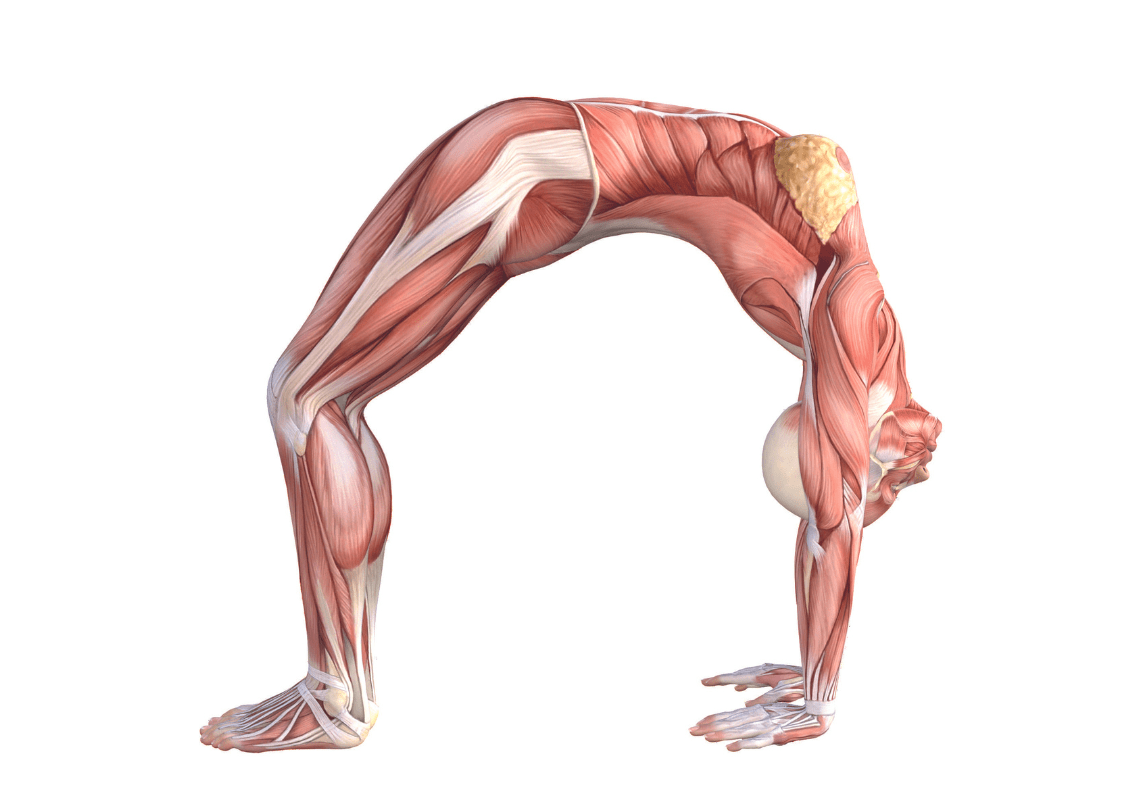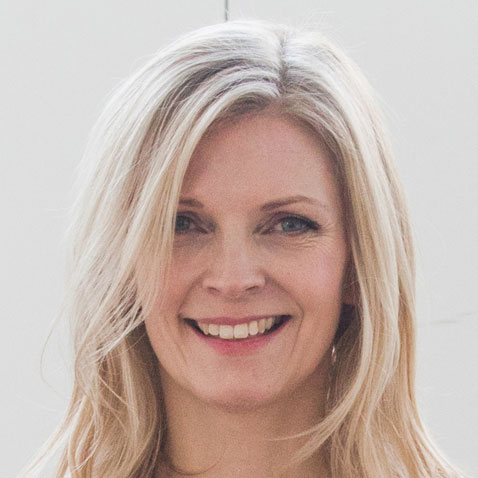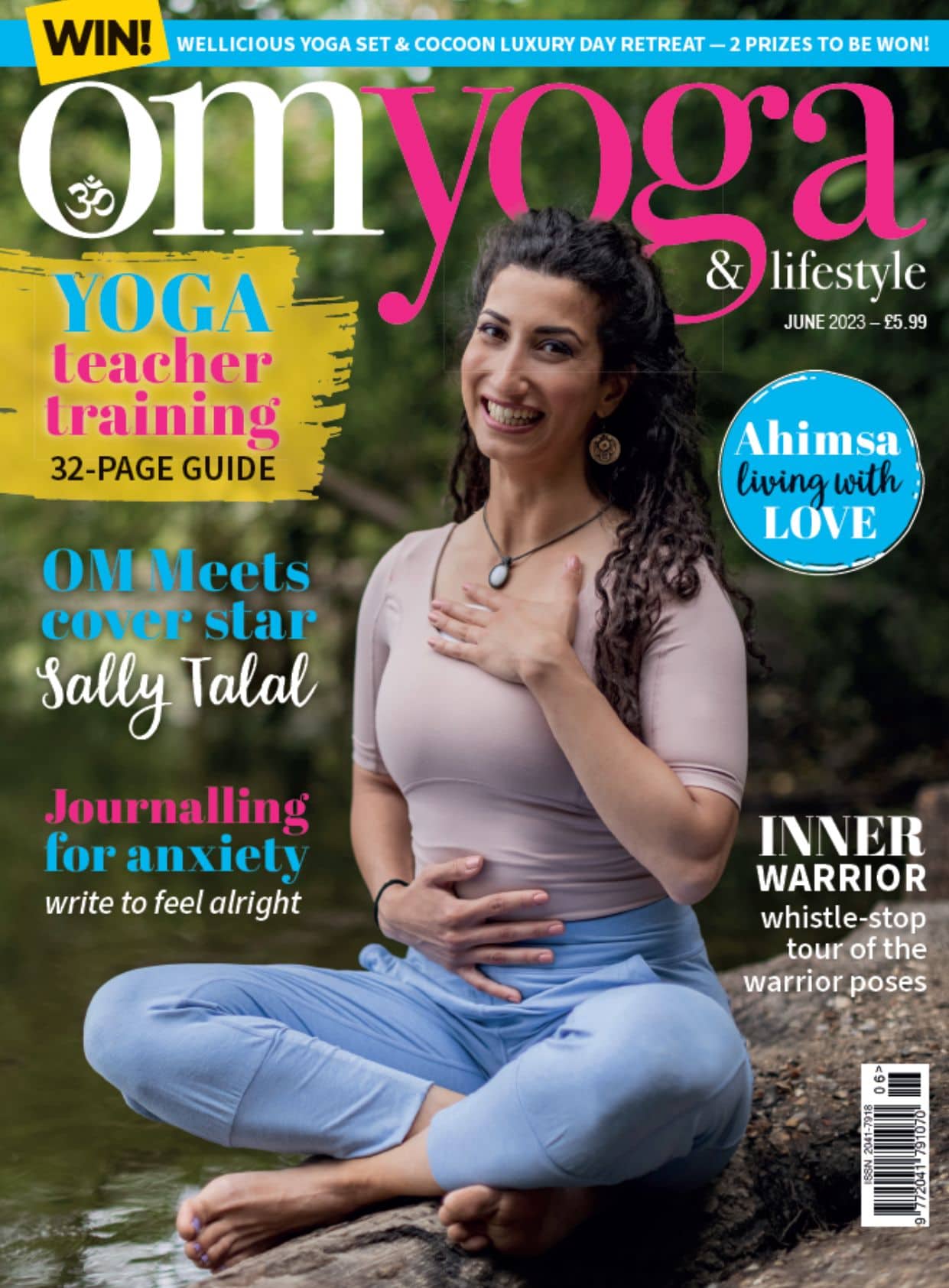
A 360º overview of...
Wheel Pose (Urdhva Dhanurasana)
With Dr Kiki Morriss
Reading time: 3 minutes
Wheel Pose (Urdhva Dhanurasana) is an advanced back bend and inversion. It stretches your chest and abdomen, whilst strengthening your arms, legs and back muscles.
Work on straightening your arms as you first lift into the position, then work on straightening your legs. Stretch both sides of your body evenly and lift the front of your body to increase the arch of your back. Lift your diaphragm, belly button and pubic bone, whilst keeping your breath steady and relaxed.
Moving into the pose
- Lie on your back with your knees bent, and your feet flat on the ground hip width apart.
- Place your hands on either side of your head with your fingers pointing towards your feet.
- Press firmly into your hands and feet.
- Lift your chest, back and hips.
- Lift your head back and place the crown of your head on the ground.
- Lift your shoulders and sacrum.
- Begin to straighten your arms and legs.
- Lift your head from the ground.
- Lift your ribcage as you arch your spine.
- Fully extend your arms and legs.
- Take your head back and keep your throat relaxed.
Focus your gaze
- Your focal point (drishti) is your nose or a fixed point straight in front of you. Alternatively try closing your eyes.
Back
- Press into your hands and push your chest forwards in order to bend evenly along your spine, and not just from your lower back.
- Use your back muscles (erector spinae and latissimus dorsi) to move your spine into an extended, arched position.
- Keep your lower back stable by activating your psoas and quadratus lumborum muscles.
- Avoid compressing your lower back as you fully extend your arms and legs.
Hips, legs and feet
- Activate your hamstrings and gluteus maximus to extend your hips.
- Use your adductor muscles to stabilise your upper legs and squeeze them towards each other.
- Activate your quadriceps muscles to extend your knees.
- Keep your feet firmly grounded.
- Keep the back of your pelvis broad by lifting your outer thighs and hips.
Shoulders and arms
- Use your triceps to straighten your arms.
- Use your infraspinatus and teres minor muscles to turn your shoulders outwards.
- Activate your trapezius and rhomboids to bring your shoulder blades towards the midline.
- Use your trapezius to soften your shoulders away from your ears.
- Keep your elbows aligned with your shoulders.
- Keep your hands firmly grounded.
Benefits
- Strengthens your arms, legs and back muscles.
- Increases the flexibility and stability of your shoulders, spine and hips.
- Develops stamina and focus.
- Energises your brain through being inverted.
- Opens your heart chakra.
Reflections
- Our spines degenerate with age and our bodies shorten and lose vitality. We can counteract this natural process by bending backwards. This allows the spine to remain long and flexible.

Variations & Modifications
- Bridge Pose is a safer option if you have a back or shoulder injury.
- You can practice Wheel Pose with your head on the ground, but be very careful not to compress your neck.
- If you have a shoulder injury try facing away from a wall with about 0.5 metres between your heels and the wall. Lift your arms and take your hands back until you can place them on the wall behind you. Gently arch your back as you reach your hands back.
Contraindications
- Avoid the pose if you have a back or shoulder injury.
- Practice with caution if you have high blood pressure.





